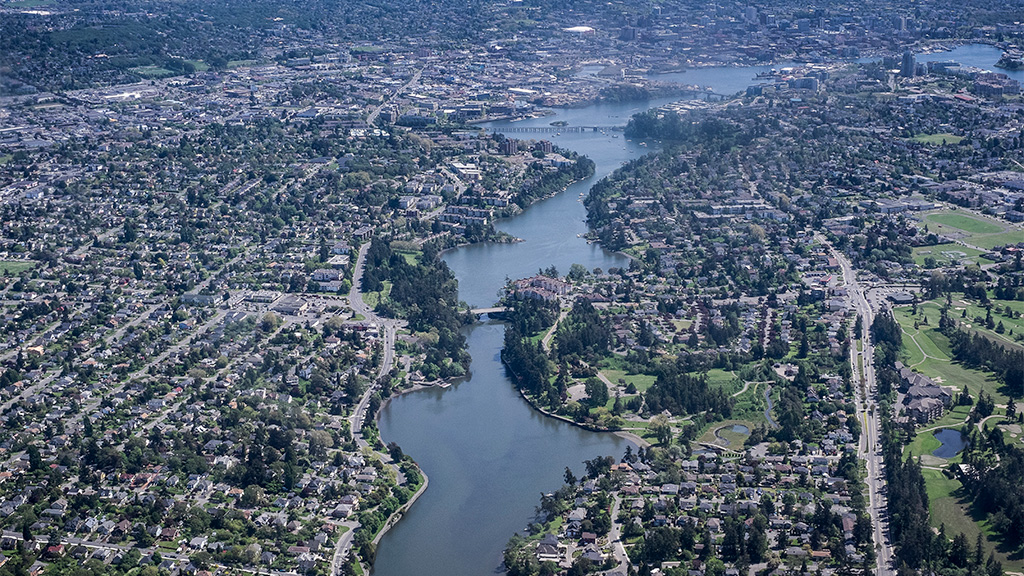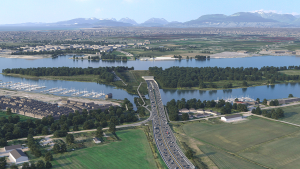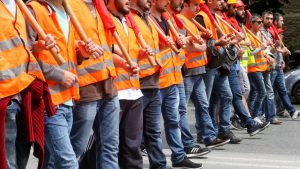During a panel discussion hosted by the Royal Architectural Institute of Canada, experts discussed community awareness, overbuilds and residential retrofits as important paths forward for increasing Victoria, B.C.’s seismic safety.
“We have the opposite of (earthquake) hysteria in Victoria, which is denial,” said Leon Plett, managing principal with RJC Engineers.
Plett’s firm has retrofitted and seismically upgraded dozens of buildings in Victoria, but he said there is still a need to raise community awareness to get more done.
He said a lack of urgency within the general and developer communities can be a roadblock when trying to design earthquake-resistant buildings.
“Every time were specifying things as designers, as engineers, we’re getting accused of over design,” he said.
Plett and fellow panellist Kate Ulmer, principal and senior structural engineer with Herold Engineering, endorsed the introduction of a seismic safety rating for buildings in Victoria, akin to one already legislated in New Zealand.
New Zealand’s New Building Standard (NBS) takes several factors into consideration before placing a seismic safety rating on a building.
Building’s can fall into one of three categories.
“The most significant of those categories is the earthquake prone category. Those are all the buildings where the NBS rating falls 33 per cent and below,” said Dr. Ken Elwood, chief engineer for the Ministry for Business Innovation and Employment of New Zealand.
The key of the NBS is that it exists as a straightforward and easy-to-understand tool to inform the average citizen about the seismic safety of buildings they work, live and play in which creates a sense of awareness, said Elwood.
“The public has latched onto these NBS numbers, they recognize it in making decisions about whether they rent in one building or another and in particular CEOs and companies are making decisions about where they put their workers,” he said.
While Ulmer and Plett strongly endorsed the introduction of such a tool for public awareness, Ulmer emphasized it would need to be done in a way to mitigate what Elwood referred to as “unintended consequences.”
Elwood said the NBS system can sometimes be misinterpreted resulting in buildings getting abandoned and closed because they seem less safe than they truly are due to the NBS rating.
“The NBS rating is the lowest value on the building but that may be on a component that represents a relatively small life-safety risk. Perhaps it’s a precast panel on the outside of the building that can be relatively easily dealt with,” he said.
Elwood said the New Zealand government has since introduced a document called Seismic Risk Guidance to help people understand how they can improve the seismic safety of their buildings instead of abandoning them out of fear, noting earthquakes are rare though “high consequence” events.
In discussing current approaches to seismic safety, Plett laid out an opportunity called an “overbuild,” which provides opportunities to deal with three major construction problems at once: seismic safety, the housing crisis and GHGs.
Essentially, overbuilding entails expanding on top of existing structures to create more livable space at the same time as seismic upgrades are being performed.
“Is there a way that we can overbuild on top of existing buildings, improve the seismic safety of the existing building and then offset the cost of that by providing more space and more rentable units? The numbers are actually looking really good,” said Plett.
He said the study of a residential apartment building in Victoria showed the cost to perform seismic upgrades and overbuild new units to create more housing was “equal to the land cost that the FSR would require.”
He said while buildings are unoccupied for the seismic work they can also undergo “deep energy retrofits.”
Investment into old structures also diverts a huge environmental problem associated with construction – it prevents teardowns.
“The greenest building you can build is one that’s already built. It doesn’t make sense to tear down heritage fabric and older buildings when you’re doubling up on the embodied carbon,” said Plett.
“These opportunities are huge. I think that we should be layering this operational carbon and energy retrofit work on top of the seismic upgrade work.”
All three panellists said focusing resources on upgrading residential structures should be the seismic priority.
“That’s where we get the most public safety for the dollar,” said Plett.
“Residential is definitely where it’s at,” said Elwood, “COVID-19 has taught us that we can actually do without our offices but we need our homes. They can be multipurpose and allow our communities to function after a large event, as long as we have our homes to shelter in place and even work from.”
Follow the author on Twitter @JOC_Evan.











Recent Comments
comments for this post are closed